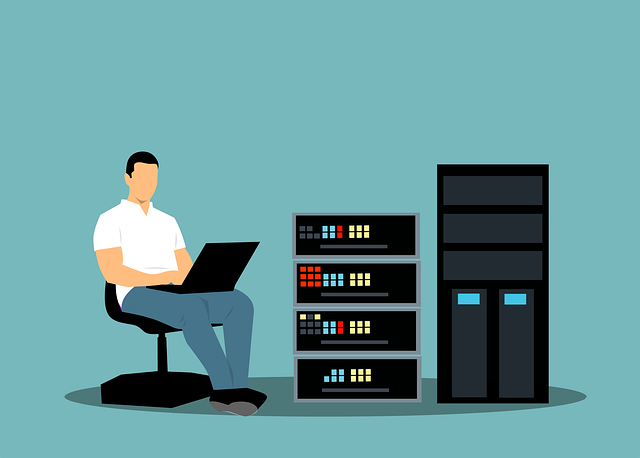What is a Driver software: Types, Benefits, Applications and More
Are you a newbie in software development? In that case, you might need a more vital idea regarding the functionality of driver software. A device driver is a software program that doesn’t have a user interface for managing hardware components required to help the computer run smoothly. However, this device driver only operates when driver software is pre-installed. As a developer, you might encounter a situation where drivers in Microsoft Windows are missing.
This could result in a driver conflict while showing an error in the device manager. When the system faces such an error, the developers are known to resolve the dispute by releasing a driver update. Nonetheless, there is more to learn about driver software besides its definition. By reading this article, you will gain a strong understanding of driver software and its related functionality.
Table of Contents
What is Driver Software?
Driver software is specialized software that only performs through specific computer-connected devices. It provides a software interface, allowing operating systems and other hardware components to interact simultaneously. These device drivers are known to rely upon hardware and operating system specific (OS).
Nevertheless, the device driver’s prime objective is to help computer and hardware components interact with each other on a reliable interface. Driver software defines messages and mechanisms so the computer’s operating system and applications can access the device.
Types of Driver Software
Developers could choose several types of driver software for their functionality. However, in this article, we have discussed a few driver software considered popular among other available options. Let’s take a detailed look at that driver software from the points mentioned below:
1. Kernel-Mode device drivers
Developers rely on kernel device drivers, which use generic hardware that forms part of a specific operating system, such as motherboards, processors, and BIOS.
Moreover, kernel device drivers are fitted with random access memory as required. When several hardware components function simultaneously, the whole machine could slow down.
However, due to the layered functionality of Kernel device drivers, it can be implemented efficiently for discrete and modular components.
2. User-mode device drivers
User-mode device drivers operate and execute commands in user mode. This type of device driver operates when users trigger a function during a particular session. Sometimes, users bring unique external devices, like plug-ins or play devices.
Device drivers like user mode are considered ideal for devices that operate smoothly. Interestingly, within Windows systems, user-mode device drivers are known for having an interface operating between Win32 applications and other modes of device drivers.
Nonetheless, the user-mode device drivers can reduce overall strain from a disk to help computer resources operate smoothly.
3. Block drivers
As a computer software developer, if you are looking for a device driver that can provide structured access to the hardware, block drivers could be the choice for you. Block drivers are known to have a file system adhering to block-sized buffers supplied through the kernel to perform I/O.
Moreover, the block device drivers demonstrate data durability with accessible block-oriented I/O. These block drivers are an excellent choice for efficiently using USB memory keys and disk drivers.
How does driver software work?
A device driver is a software component that helps the operating system and other suitable devices communicate smoothly. For example, suppose an application is trying to read data from a specific device.
Those applications can send a function that is purely implemented by the operating system through the driver process. In such cases, the device driver manufactured by the respected company can understand the hardware and interpret the data.
Once this data is received, the driver software sends it to the operating system for an application to preview.
List of Applications of Driver software
Once you understand the operability behind driver software, examining its applications will help you better understand device drivers.
1. Used to access storage systems
One of the most crucial applications that driver software is part of could be accessing computer storage systems. This includes external and internal devices comprising USB flash drives, hard drives, and network storage spaces.
When device drivers are available in computer systems, users can access them easily. Moreover, connecting storage devices with computers without software is a mammoth task. Because the operating system cannot recognize or detect those commands.
2. Accessing Input and output devices
The operating system is responsible for interacting with device drivers to ensure hardware continues to function responsibly. Mice and keyboards are input devices, while display devices like monitors fall under output devices. However, the functionality of plug-and-play devices is deemed generic and does not require manual installation, as your operating system can install it automatically.
3. Operating digital cameras
Specific device drivers, like digital camera drivers, help establish a connection between the computer and other components. Without such specific drivers, the operating system will not recognize the device. Digital cameras allow you to transfer photos and videos to the computer.
4. Superiority in video performance
Graphic cards must be in the system when users want superior video quality. They are responsible for playing video games or streaming videos on high-resolution graphic cards.
Graphic drivers should be in the system for graphic cards to function inexplicably. Moreover, you can update those graphic drivers, enabling a speed boost and fixing existing problems.
Benefits of installing custom drivers
Nowadays, the two most popular operating systems, Windows and MacOS, require extensive driver support mechanisms. When you connect your custom-made device drivers, you can start working on them immediately. If you want each device in your computer to operate smoothly, choosing to install custom drivers would be a great idea.
1. Performance boost
The most reliable feature of custom drivers is the overall improvement it brings to hardware components. This leads to considerably greater performance standards compared to previous instances.
2. Improved compatibility
With smooth compatibility between all components in a computer, the system would continue to perform at your required standard. However, specific custom driver software could solve those problems, ensuring fewer compatibility issues.
3. Ensuring greater stability
One of the biggest reasons behind developing custom drivers is to ensure better stability. By using custom drivers, you will have a stable and reliable computer that minimizes crashes and improves overall performance standards.
4. Optimizing power management
Many custom drivers can reduce power consumption to more significant numbers. Thereby causing an extended battery life for laptops and improved overall energy efficiency.
5. Tailored support program
Custom driver software could help users access support channels that provide continued and reliable assistance when problems arise. It could also troubleshoot those problems while configuring software efficiently.
Why is Driver software required?
The device driver simplifies programming standards by working as a bridge between devices and applications. This device software is written in high-level code to adhere to specific hardware devices. Each device connected to computer systems requires user-specific commands to function correctly.
For example, digital camera drivers are used to receive photos and videos from digital cameras. The driver is responsible for interpreting the generic statements and converting them to lower-level languages.
Conclusion
Device drivers have become critical components required for IT infrastructure to function responsibly. With the ever-growing demand of consumers and professionals alike, the requirement for driver software is also increasing. Driver technology could ensure a massive improvement in the overall performance of computer systems.
FAQs (Frequently Asked Questions)
Why device drivers are required?
Device drivers are known to play an essential part in establishing an interface for interacting with specific devices. It defines the messages sent through hardware components for a computer system to understand.
Where can device drivers be used?
Device drivers are an extended part of operating systems for enabling basic functionality programs. Plenty of best software to manage drivers is required for printers, scanners, digital cameras, audio cards, etc.
Are device drivers being part of system software?
Yes, device drivers are a part of system software with operating systems, utility software, and firmware.
What is the best software to Manage Drivers?
There are a few best software such as Ashampoo, Driver Easy, Driver Genius, and Avast Driver Updater.
What is Application Software & Programming Software?
Application software is computer programs made to perform specific tasks for users. Programming software is a set of instructions used to build new software or perform tasks.









